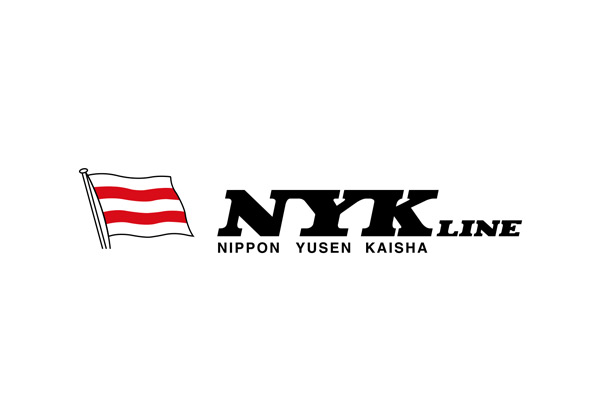
NYK Line Q1 2025 Consolidated Financial Results
TOKYO : Nippon Yusen Kabushiki Kaisha (NYK Line) has released Consolidated Financial Results for Q 1 Three Months Ended June 30, 2025
Review of Operating Results
In the first three months of the fiscal year ending March 31, 2026 (April 1, 2025 to June 30, 2025), the company reported revenues, operating profit, recurring profit, and profit attributable to owners of parent of ¥600.9 billion (decreased by ¥50.7 billion from the first three months of the previous fiscal year), ¥37.7 billion (decreased by ¥28.0 billion), ¥59.7 billion (decreased by ¥66.0 billion), ¥52.0 billion (decreased by ¥58.1 billion), respectively. Non-operating income includes equity in earnings of unconsolidated subsidiaries and affiliates of ¥23.7 billion, of which ¥4.5 billion was earned by OCEAN NETWORK EXPRESS PTE. LTD. (ONE), an equity-method affiliate of the Company.
Changes in the average exchange rate between the U.S. dollar and yen as well as the average bunker oil price during the first three months of the current and previous fiscal years are shown in the following tables.
Overview by Business Segment
Business segment information for the three months ended June 30, 2025 (April 1, 2025 to June 30, 2025) is as follows.
Liner Trade Business
Container Shipping Division: Amid a continued increase in shipping capacity following the delivery of new vessels, the division experienced a sharp decline and subsequent surge in the transport demand originating from China, affected primarily by tariff polices in the U.S. and China; market levels fluctuated significantly while freight rates were lower throughout the quarter year on year. At ONE, the profit level was lower year on year due to a year-on-year decrease in freight rates.
Terminal Division: At the terminals in Japan, the handling volumes increased year on year.
As a result of the above, the Liner Trade Business overall decreased revenues and profits year on year.
Air Cargo Transportation Business
Freight rate and handling volumes from Asia to North America decreased year on year due to U.S. tariff policies and other factors.
As a result of the above, the Air Cargo Transportation Business decreased both revenues and profits year on year.
Logistics Business
Air Freight Forwarding Business: Although the handling volumes were flat year on year, the profit level was higher year on year due to lower purchasing prices.
Ocean Freight Forwarding Business: Although the handling volumes increased year on year, the profit level declined year on year due to higher costs caused by inflation.
Contract Logistics Business: The profit level declined year on year as a result of a decrease in the handling volumes of major customers in U.S. due to the uncertain economic outlook caused by the impact of the U.S. tariff policy and other factors.
As a result of the above, the Logistics Business overall decreased both revenues and profits year on year.
Automotive Business
In the marine transport business, with the continued strong transport demand, the number of vehicles transported remained at the same level year over year. On the other hand, the business was affected by a decrease in revenues due to the stronger yen against the U.S. dollar compared to the last year and higher costs such as cargo handling costs due to inflation.
The auto logistics business experienced a decrease in the number of vehicles handled and a rise in cost due to inflation.
As a result of the above, the Automotive Business overall decreased both revenues and profits year on year.
Dry Bulk Business
The Capesize market declined compared to the strong year-ago period. The Panamax size and smaller market declined year on year despite strong soybean shipments from Brazil.
The Dry Bulk Business overall was affected by foreign exchange fluctuations in addition to a decline in the market conditions.
As stated above, the Dry Bulk Business overall significantly decreased both revenues and profits compared to the strong performance of the same period of the previous fiscal year.
Energy Business
VLCC (Very Large Crude Carrier): Market levels increased year on year, reflecting unstable movements including temporary spike due to the worsening situation in Iran and Israel, despite a decline from mid- May due to a softening supply-and-demand conditions.
VLGC (Very Large Gas Carrier): Market levels temporarily fell sharply in April due to concerns about a decline in transportation demand caused by the U.S. tariff policy and other factors. While the market subsequently showed a recovery trend due to the deferral of the application of tariffs and other factors, it declined year on year.
Petrochemical tanker: Market levels declined year on year due to a slowdown in cargo movements resulting from a decrease in demand for petroleum products caused by an economic slowdown and other factors.
LNG carrier: The results were steady on support from the long-term contracts that generate stable earnings.
Offshore business: FPSO (Floating, Production, Storage and Offloading) recorded a one-off profit as a new project launching operation. Shuttle tankers operated steadily.
As a result of the above, the Energy Business overall increased both revenues and profits year on year.
